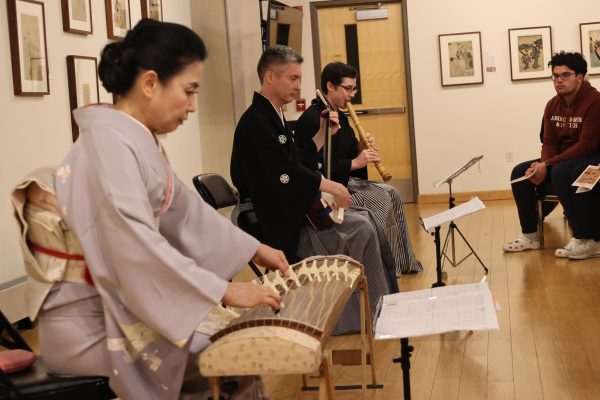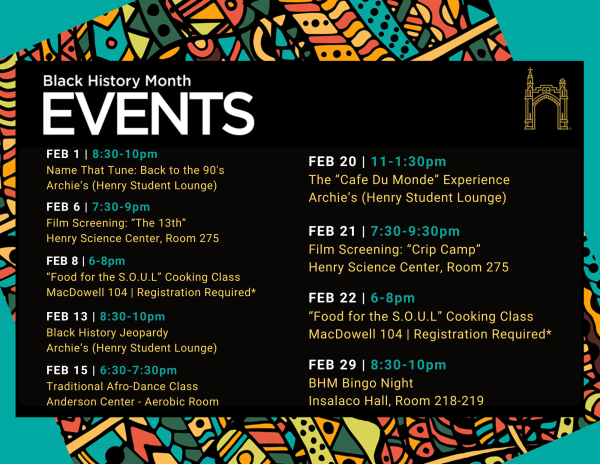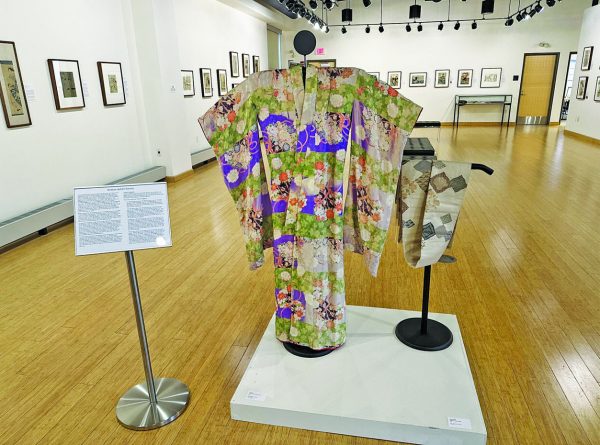‘Masters’ Teach Classes to Honor Black History
February 14, 2018
The University is tackling the issue of race with Master Classes, held through February, to honor Martin Luther King Jr. and Black History month.
Dr. Patrick Hamilton taught a Master Class called “Mapping Empathy: Teaching Literature and Race” Jan. 31.
Hamilton, Associate Professor of English, is well versed in racial studies. His talk was a variation of a lesson he teaches to facilitate awareness of racial bias.
Kimberly Kowalski, junior English and secondary education major, didn’t know what to expect from the talk.
“I talked to him the day prior to his lecture,” said Kowalski, “and I asked him if he was prepared for his talk, and he said, ‘Yeah, I just don’t know what I’m gonna do yet.’ And I looked at him, and I go, “What?” And he said, “No, I know what I’m gonna do, I just don’t know how I’m going to do it.” So that was interesting, because I felt as though, okay, then maybe I should expect something hands on, maybe I should expect something really cool and out of the park.”
Kowalski got what she wanted from Hamilton’s guided exploration of the story “Recitatif” by Toni Morrison.
“I liked how it was hands on, like I thought it was going to be, how we had to separate into groups and each read a section, and then it almost seemed impossible because he asked who’s who, which race is this girl versus what race is that girl, and the outcome was absolutely astounding.”
Kowalski said that as an education major, she can appreciate Hamilton’s lesson of discovery.
“I wish I came up with a lesson plan that great,” Kowalski said.
Another English major, Kristen Capitano, also liked the active learning in the class.
“It was a lot more interactive than I thought it was going to be,” said Capitano. “We had to break off into groups and read different sections of the same story, but none of us got to read the whole thing. Then we had to determine which of the characters was white, and which one was black, and it turned into this whole big debate.”
Capitano thinks the talk definitely gave her a greater understanding of prejudice.
“He literally wrote prejudices on the board as we said them,” said Capitano, “so seeing them in writing was really jarring, and it makes you realize how genuinely mean some of the prejudices are.”
Hamilton said he worked to make the transition from a class lesson to a Master Class format because students normally read the entire story in advance.
“That was something not really feasible with the large group. So I had to get them into the story in a way that was not, ‘Hey read this 20 page story in the next hour-and-a-half, and then we’ll talk about it.’”
Hamilton had to cleverly address participants’ lack of foreknowledge.
“When I do it in class the students very often bring up the fact that they’re confused about which race each character is,” said Hamilton. “I always start each class off by asking, ‘Are there any questions?’ And invariably, one of the students will raise their hand and ask that question, and I’ll sort of ask if anyone else is unclear on that, and they’ll say yes, and I’ll say they’ve disappointed me for not reading closely enough, and then it turns into a whole thing.”
Hamilton decided to inform participants at the beginning that the racial identity of the characters is unclear.
“That was the main difference,” said Hamilton, “that students come in confused, and in a way I had to design this discussion in order to confuse the people present.”
Hamilton was satisfied and pleasantly surprised by the results of the discussion.
“There were some very interesting things that went on,” said Hamilton, “that normally don’t occur. The way in which the groups felt it necessary to give this sort of long preamble about how they didn’t agree with what they were about to say, or that they thought what they were about to say is horrible, that they themselves are not racist, that they don’t like stereotypes— that was different.”
This was mainly because many of the listeners had figured out that he had laid the trap for them, Hamilton said.
“What happens in class is essentially what happened in the session, where the first group reports what they say, and then the next group goes and they’re the exact opposite. Then it basically flips with each group through the story from that point on. The one thing that was different is that there were two sections that were too long to assign on group to. Part one is like, six or eight pages long. So I actually divided that between two groups. It was interesting to see that within part one, the groups flipped, which I wasn’t expecting.”
Hamilton said the groups were getting inconsistent answers, which always happens when he does this exercise.
“There were groups that didn’t want to assign black or white. There were a couple groups that said, ‘Well they’re mixed.’ One group said they’re both white, which was totally new,” said Hamilton. “People had said in the past, ‘Well maybe they’re mixed,’ and I tell them they’re not allowed to have that answer, just because I’m cruel that way.”
Session participants seemed to come to the same result that students do: They challenge their own thinking and tendency toward stereotypes.
The Master Classes included presentations by Dr. Ron McCurdy, Dr. Ryan Watson, and Dr. Alicia Nordstrom.






